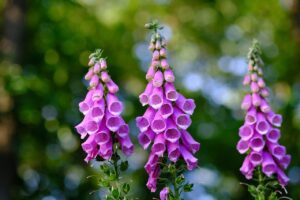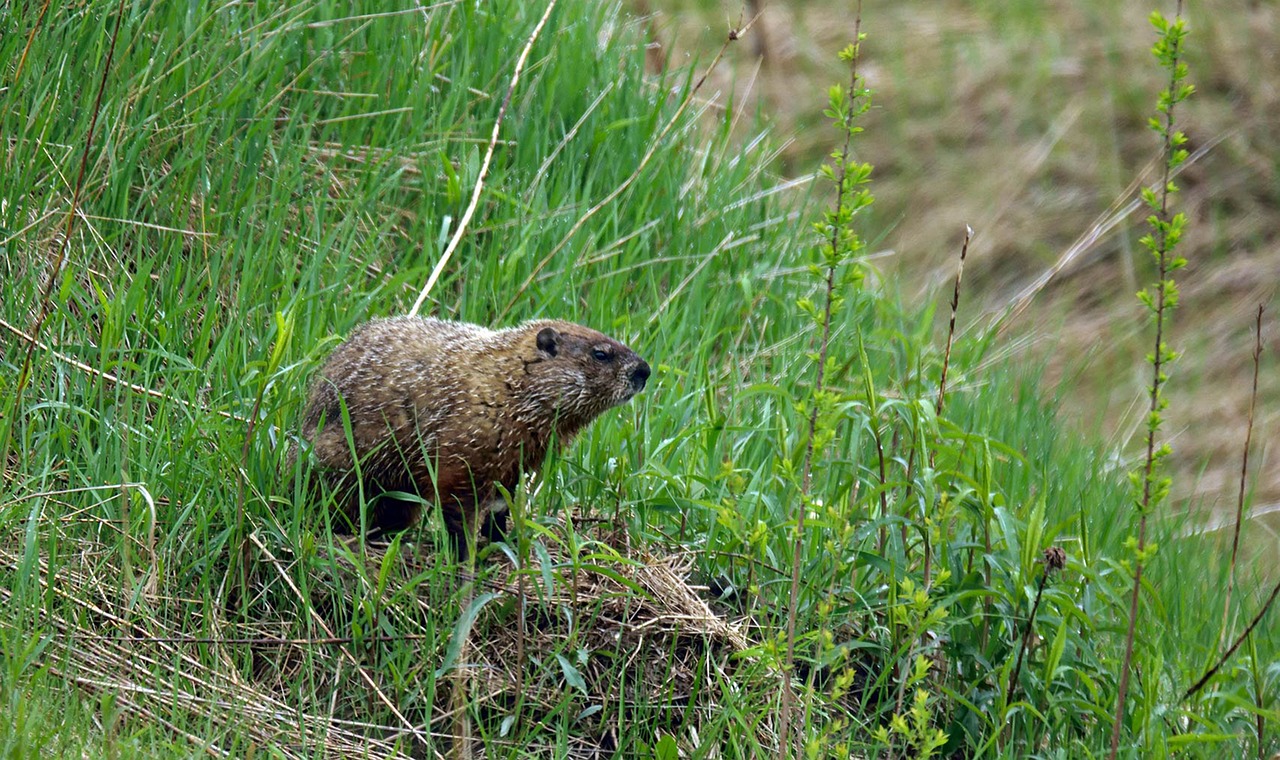
If you’re wondering how to stop groundhogs eating garden plants, we’re here to help.
Although it may seem impossible to maintain a beautiful garden or yard with these animals around, we assure you that there are plenty of plants they simply don’t care for.
We have compiled a brief list of the best groundhog resistant plants around. If you’re interested in seeing a more comprehensive list of plants, feel free to check out Cornell University’s website.
Lavandula (Lavender)

The first plant that groundhogs generally don’t care for is Lavender.
This ornamental plant adds color to gardens and yards with its bluish, violet flowers.
It is a member of the mint family and grown all around the world.
Groundhogs don’t care for the aroma Lavender gives off which makes it an excellent selection for your yard.
Lamprocapnos (Bleeding Heart)

The next groundhog resistant plant is the Lamprocapnos.
This plant is a member of the poppy family and is known for its pink and white flowers which resemble a bleeding heart.
It’s important to note that these plants don’t care to receive too much sun unless they’re being grown in a moist and cool climate.
Groundhogs simply don’t care for the aroma these plants give off or their taste.
Narcissus (Daffodil)

Third on our list is Narcissus, more commonly known as Daffodil.
The bright yellow flowers of the plant are a very attractive addition to your ornamental plants.
These groundhog resistant plants are perennials which grow in the spring.
Groundhogs don’t like the way they smell and will generally stay far away from them.
Digitalis (Fox Glove)

Another fantastic groundhog resistant plant is Digitalis (Fox Glove).
These beautiful purple-flowering plants will be sure to add contrast to your yard.
While they may look beautiful, they are quite toxic to both humans and animals. As a result, groundhogs tend to keep their distance from them.
Rudbeckia Hirta (Black-Eyed Susan)

Last but not least is Rudbeckia Hirta, better known as Black-Eyed Susan.
These gorgeous perennials can grow over 3 feet tall and normally appear in late summer to early fall.
Groundhogs have been known to stay away from these plants which make them a relatively safe bet for your garden.
Bottom Line
We hope you are now aware of some of your options and how to stop groundhogs eating garden plants.
The 5 plants listed above are some of the best groundhog resistant plants around.
They all add color to your gardens and yards while having the benefit of repelling groundhogs.
If you want to keep plants that groundhogs like to eat, we suggest using an ultrasonic groundhog repellent, natural groundhog repellent, or a groundhog fence. If none of those work out, you can always resort to a groundhog trap to safely remove them from your property.
We wish you the best of luck and kindly request you share your experiences with us below!

